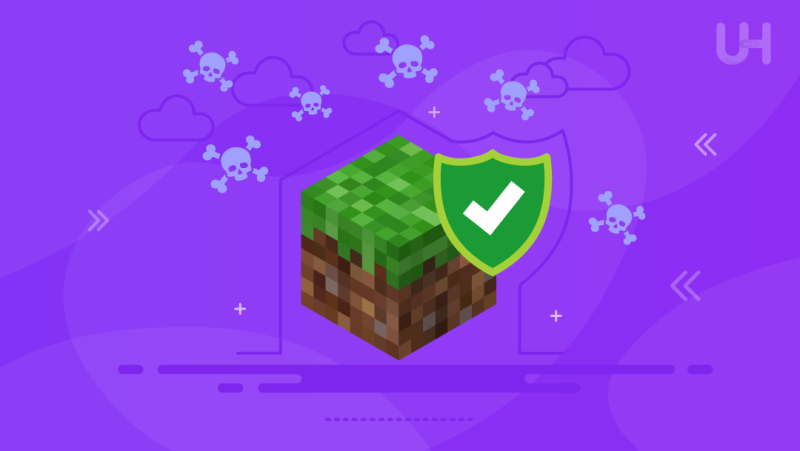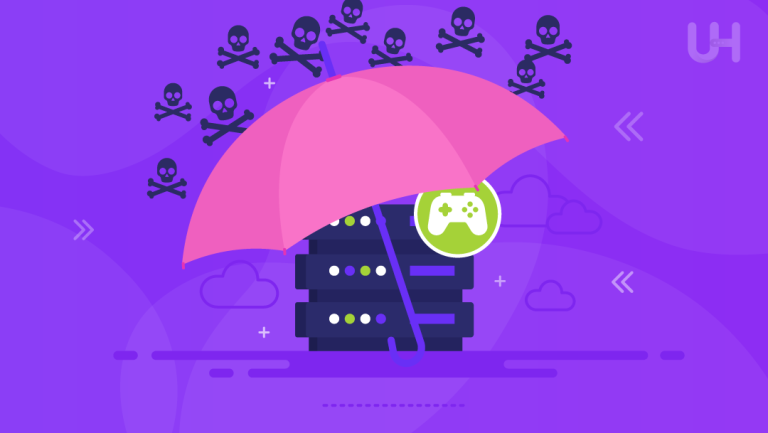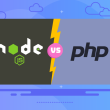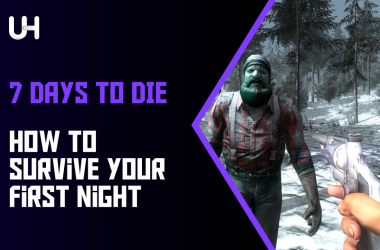Have you ever had someone flood your mailbox with junk mail, making it impossible to find the important stuff? Well, a DDoS (Distributed Denial of Service) attack is kind of like that, but with internet traffic bombarding your Minecraft server. This flood of data overwhelms the server, blocking out real players who want to join and play.
Protecting your Minecraft server from these attacks is super important. If it’s not safe, players can’t get in, and it causes a lot of frustration. Plus, it could hurt the reputation of your server. That’s why it is important to understand DDoS attacks and how to protect your server.
Understanding DDoS Attacks
DDoS, short for Distributed Denial of Service, is a type of cyberattack aimed at disrupting the normal functioning of a server, network, or online service. Unlike traditional cyberattacks that may originate from a single source, DDoS attacks involve a coordinated effort from multiple sources, often compromised computers or devices, to flood the target with an overwhelming amount of traffic. This flood of data exhausts the target’s resources, rendering it inaccessible to legitimate users.
How DDoS Attacks Impact Minecraft Server Security
When a DDoS attack targets a Minecraft server, it floods the server with an excessive amount of traffic, causing it to become unreachable for players trying to connect and play the game on a dedicated gaming server. This disruption not only affects the gameplay experience but also poses security risks to the server itself. Moreover, DDoS attacks can strain server resources, potentially leading to crashes, data loss, and vulnerabilities that malicious actors may exploit.
Common Techniques Used in DDoS Attacks
- Volume-Based Attacks: These attacks flood the target server with a high volume of bogus traffic, consuming its unlimited bandwidth and resources. Examples include UDP floods and ICMP floods.
- Protocol-Based Attacks: These attacks exploit vulnerabilities in network protocols to overwhelm the target server. Examples include SYN floods and DNS (Domain Name System) amplification attacks.
- Application Layer Attacks: Also known as Layer 7 attacks, these target specific aspects of the server’s application layer, such as HTTP or HTTPS, aiming to exhaust server resources or disrupt services. Examples include HTTP floods and Slowloris attacks.
Identifying Vulnerabilities in Your Minecraft Server
Ensuring the security of your Minecraft server involves more than just the protection against DDoS attacks. It’s crucial to assess and address vulnerabilities within your server’s infrastructure to safeguard against potential threats effectively.
Assessing Current Security Measures
Before addressing vulnerabilities, it’s essential to evaluate the existing security measures in place for your Minecraft server. This includes examining firewall configurations, DDoS protection services, access controls, and software updates. Moreover, assessing the effectiveness of these measures provides insights into potential gaps and areas for improvement.
Recognizing Potential Weak Points
Identifying vulnerabilities involves recognizing potential weak points in your Minecraft server’s infrastructure and configurations. Common weak points include outdated software or plugins, inadequate network security, weak authentication methods, and insufficient server resources. Moreover, by pinpointing these vulnerabilities, you can take proactive steps to strengthen your server’s defenses.
Importance of Regular Security Audits
Regular security audits play a crucial role in maintaining the integrity and security of your Minecraft server. These audits involve conducting thorough assessments of your server’s security posture, including vulnerability scans, penetration testing, and log analysis. By performing regular audits, you can detect and address vulnerabilities before they are exploited by attackers, ensuring ongoing protection for your server and its players.
How to Prevent DDoS Attack on Minecraft Server?
Protecting your Minecraft server from DDoS attacks requires a combination of proactive measures and strategic planning.
Choosing a Reliable Hosting Provider
Selecting a reliable hosting provider with robust DDoS mitigation capabilities is the first line of defense against attacks. Look for providers that offer dedicated server hosting, advanced network infrastructure, and proactive monitoring to detect and mitigate DDoS threats effectively.
Ready to Protect Your Minecraft Server?
Take action now to safeguard your Minecraft server against DDoS attacks. Upgrade to a reliable hosting provider with built-in DDoS protection services. Explore our Minecraft VPS hosting solutions and ensure uninterrupted gameplay for your players today!
Utilizing Minecraft Server DDoS Protection Services
Consider investing in specialized DDoS protection services that are specifically designed to safeguard Minecraft servers against attacks. Moreover, these services employ sophisticated mitigation techniques, such as traffic scrubbing and behavioral analysis, to identify and filter out malicious traffic before it reaches your server.
Configuring Firewall Settings
Configure your server’s firewall settings to filter incoming traffic and block suspicious or malicious IP addresses. Moreover, by implementing firewall rules based on traffic patterns and behavior, you can mitigate the impact of DDoS attacks and prevent unauthorized access to your server.
Implementing Rate Limiting and Traffic Filtering
Implement rate limiting and traffic filtering mechanisms to control the flow of incoming connections and prevent overload on your server. By setting limits on the number of connections per IP address or implementing traffic filtering rules to prioritize legitimate traffic, you can effectively mitigate the impact of DDoS attacks and ensure uninterrupted gameplay on your gaming server.
Advanced Security Practices: Protect Minecraft Server from DDoS

Setting Up a Proxy Server or VPN
Implementing a proxy server or virtual private network (VPN) can add an extra layer of protection to your Minecraft server by masking its true IP address. This makes it more difficult for attackers to target your server directly and reduces the risk of DDoS attacks. Additionally, a proxy server or VPN can help distribute incoming traffic across multiple servers, mitigating the impact of attacks and ensuring smoother gameplay for your players.
Using Mod Security and Anti-DDoS Plugins
Utilizing specialized security plugins, such as Mod Security and Anti-DDoS plugins, can bolster your server’s defenses against DDoS attacks. These plugins offer real-time traffic monitoring, anomaly detection, and automated mitigation, allowing you to identify and respond to potential threats quickly. Moreover, by integrating these plugins into your server’s infrastructure, you can enhance its resilience to DDoS attacks and maintain optimal performance for your players.
Optimizing Server Performance to Withstand Attacks
Optimizing your server’s performance is essential for withstanding DDoS attacks and ensuring uninterrupted gameplay. This includes optimizing server hardware and software configurations, optimizing network settings, and implementing caching mechanisms to reduce server load. Moreover, you can increase its capacity to handle incoming traffic spikes during DDoS attacks by fine-tuning your server’s performance. It will minimize the impact on player experience.
Emergency Response Plan
Protecting your Minecraft server from DDoS attacks requires more than just preventive measures; it also necessitates a well-defined emergency response plan to mitigate the impact of attacks and ensure swift recovery.
Creating a DDoS response team composed of knowledgeable individuals is crucial for effectively managing DDoS incidents. Moreover, this team should include server administrators, network engineers, and cybersecurity experts who are capable of coordinating response efforts and implementing mitigation strategies in real-time.
Establishing communication channels with your hosting provider is essential for timely assistance during DDoS attacks. Moreover, ensure that you have designated contacts within the hosting provider’s support team who can assist you in mitigating the attack and restoring service to prepare your Minecraft server.
After the attack subsides, conducting a thorough post-attack analysis is crucial for identifying vulnerabilities and weaknesses in your server’s defenses. This analysis should involve reviewing server logs, assessing the effectiveness of mitigation measures, and implementing additional security enhancements to prevent future attacks. Additionally, ensure proper procedures are in place for disaster recovery or services that may have been affected during the attack.
Conclusion
So, there you have it! Keeping your Minecraft server safe from DDoS attacks is super important for a smooth gaming experience. By understanding how these attacks work, finding weak points in your server’s security, and taking steps like choosing a reliable hosting provider and setting up protection services, you can prevent DDoS attack on Minecraft and keep your players happy.
Remember, it’s not just about preventing attacks; having a plan in case one happens is also crucial. By creating a response team, staying in touch with your hosting provider, and knowing what to do during and after an attack, you can minimize the impact and get back to gaming as soon as possible.
Discover more about our DDoS-protected VPS hosting options at Ultahost and guarantee a smooth, uninterrupted Minecraft experience for you and your players. Let’s create a safer and more enjoyable gaming environment together!
FAQ
How can I tell if my Minecraft server is under a DDoS attack?
Signs of a DDoS attack include sudden lag, server crashes, or players being unable to connect. Also, monitoring server performance and network traffic can help detect unusual activity.
What should I do during a DDoS attack on my Minecraft server?
Stay calm and follow your emergency response plan. Activate DDoS protection services, implement firewall rules, and monitor server performance. Moreover, communication with your hosting provider is crucial for assistance and mitigation.
How does a DDoS attack affect my Minecraft server?
A DDoS (Distributed Denial of Service) attack floods your server with an overwhelming amount of internet traffic. Making it inaccessible to legitimate players. Additionally, this can disrupt gameplay and potentially harm your server’s reputation.
How do I choose the right hosting provider for DDoS protection?
Look for hosting providers that offer dedicated server options with built-in DDoS protection services. Moreover, consider factors like network infrastructure, uptime guarantees, and reputation for security.











